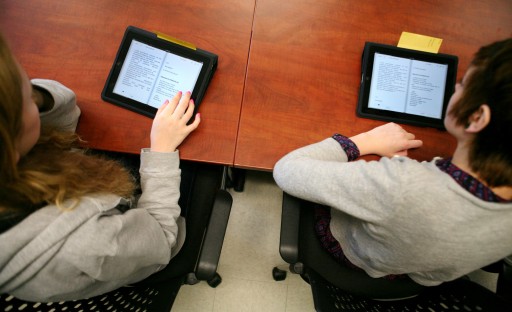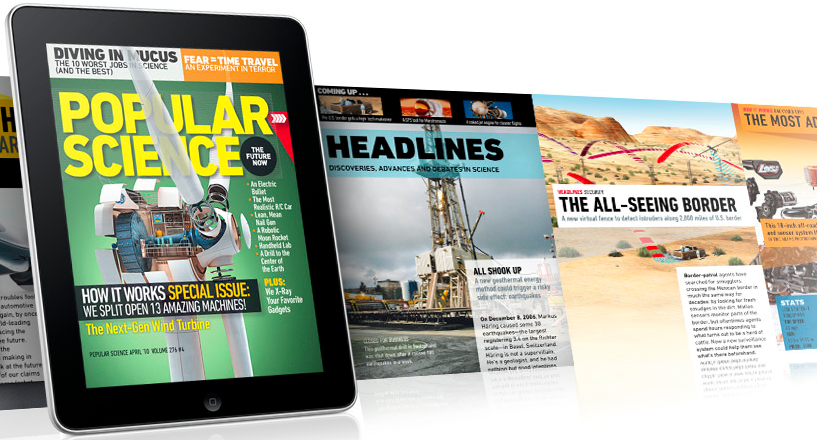Though the technology world is admittedly a bit obsessed with Apple, it’s hard to blame them.
After all, the Cupertino-based company wouldn’t inspire so much chatter if their products and services were merely ordinary or everyday. Apple seem to have a knack for creating things – both technology and services – that provoke discussion.
But why is it that their competitors – everyone from Google, Microsoft and Amazon to Sony and Samsung – fail to inspire the same sort of fevered adoration or initiate industry-changing shockwaves? What lessons are they failing to learn?
Here are three things all of Apple’s competitors must deal with.
You Are All Media Companies Now
Recently, we’ve heard rumors of Apple trying to create a ‘digital newstand’ for magazines and newspapers. It’s yet another sign that Apple’s position of primacy comes from them thinking like a media company, not simply a company who makes electronic products.
We live in a time when the way media, entertainment are art are distributed is changing radically. This change is obviously happening because of technology. If you are a technology company – and you want to be a big one – you can no longer afford to not think about media, whether it is about setting up your own service or tightly integrating with preexisting ones. People no longer want to buy devices that perform x or y function; they want the device to be an entry-point into a universe of media.
As a result, you need to think about new ways to deliver digital content. That’s what seems important about Apple’s rumored attempts at an iTunes for newspapers; it displays innovative thinking about a new media infrastructure while so many other companies are futzing around with half-hearted attempts at new services or piggybacking on older ones.
That’s indicative of a kind of thinking that’s concerned with new ways of using technology to access media. To compete with Apple, you have to do more than copy them or simply replicate older delivery systems; you need to integrate technology and ecosystems to revamp how news and entertainment are delivered.
People First, Technology Second
Apple products seem to follow a simple rule – that also happens to be incredibly hard to execute: first ask what people want to do, then create technology, interfaces and services to make it happen.
A perfect example was the iPad. Its creation was motivated by a rethinking of how and where people want to experience content. Those who argued that you could “do the same thing with a netbook” failed to understand that the specific bullet-points of functionality weren’t the appeal of the iPad; that you could also read books on a smartphone or laptop was besides the point. The iPad works because of the combination of form, functionality and design that are all a result of first thinking of the tasks and activities people wish to accomplish and then creating a device that performs those tasks.
By contrast, other companies create technology for specific functions first: a better quality HDTV, or a smartphone that also plays many different video formats. That’s a very practical, sensible approach – but it’s also a 20th century one that puts the function of technology over its usability, and worse puts technology itself over the people using it.
To compete with Apple, you need to first ask yourself what things people might like to do with technology and then make the technology and infrastructure to accomplish that. It’s also no surprise, then, that Apple are not only creating devices, as in order to respond to people’s needs, they’ve also had to create new services.
Design Is Not Aesthetics OR Usability; It’s Both
It is frequently hard not to make fun of the flannel-shirted, Macbook Pro-toting hipster. Sometimes, it seems Apple products are as much fashion accessories as much as anything else.
But while there is some truth to the stereotype, that line of thinking also fails to understand what makes Apple’s approach to design so unique: to Apple, there is no difference between aesthetics and usability; design is how something feels to use.
This is one more lesson Apple’s competitor’s are yet to learn. While companies like Sony and Samsung can still make beautiful hardware, and Google and Microsoft can make great software, few create interfaces like Apple.
The key difference? That Apple’s concern is that an interface should have a ‘feel’. It’s not simply efficiency OR looks – it’s about how the two overlap. So the wheel of the iPod, or the multi-touch of the iPad are not only about achieving a specific function – zooming or finding an album – they’re about the experience of doing so.
That may sound wishy-washy to some. Yet so many people talk about the experience of reading a book or listening to an album on vinyl or going to a cinema – obviously how we access information and entertainment matter. They are part of rituals and memories and emotions. And while many other companies are busy making interfaces efficient, Apple are making them enjoyable to use. It’s a big deal.
“Simple” Lessons Are Hard to Execute
None of these lessons are difficult to understand – but they are exceedingly difficult to execute. Shifting a technology company toward media requires massive restructuring; rethinking design means going on a challenging headhunting process; and making your technology people-centric requires vision and leadership, which isn’t something you can simply invent or institute through a set of corporate policies.
All that said, it’s vital that Apple’s competitors do so – not simply for their own sake, but for consumers too. After all, right now, people who want holistically designed, media-centric products are also locked into Apple’s closed world. But why should consumers have to make that choice?
If Apple’s competitors really want to step it up and become a similar kind of cultural force as Apple, it’s time to get started: focus on the overall experience and then work your way out from there.





ARE yet to learn? I think you meant to write “have yet to learn”.
Agreed. Also, a competitor’s worry may be its competitors, but the two nouns do not have the same meaning.
Copy editor, instantiate thyself.
Great read! We are not simply fan boys or fanatics when it comes to the issue of technology, Apple has just figured it out like none other. My tech life is smooth, powerful, easy to use, and it helps me tremendously in the productivity areas in my life. I’ve been a Windows user, and I’ve given Android a couple of test runs, but the truth is Windows and pc’s are for the general population who don’t really care about ecosystems and seamlessness. Their tech lives are typically cluttered, chaotic and pretty counter productive (Perhaps because they spend most of the time troubleshooting their equipment, I dunno.) As far as these guys taking notes from Apple, I’m not so sure they believe that apple has a reliable model in place. They probably think Apple keeps getting lucky or something, because based on their products, that’s what it seems like. Sony, Sony, Sony boi where do I begin? You create a truly revolutionary product in the playstation and once your branch off to other technologies, you move away from the bases of the technology that made you who you were. They are trying to get back, but it may be too little to late unless they step back for a minute to revamp their product line, introducing the one ecosystem that everyone obviously wants. Every piece of hardware from you TV’s, computers, and mobile devices should work much like the PS3! Why is this so hard to execute? For the life of me, I don’t understand why Sony relies on Android to power their new mobile devices and Microsoft to be the backbone of their computer os. It seems to me that there are too many misleading algorithms informing these companies on how to manage a product. I own a mac mini, an iphone and an ipad. They all speak the same language, feel the same, look amazing, and give you a personal experience that helps you execute life’s demands. I’m tired of trying to understand why although these companies are releasing new technologies, they aren’t getting the kinds of buzz and sales that Apple is. IDK man IDK!
Dione Caroll Said it all..
Case in point.
My 2.5 year old Niece uses the iPad as if it were Lego.
That is usability.
I think you hit the nail right on the head … it is all about usability and the experience. Other companies are constantly advertising their spec sheets, but only a fraction of the potential users care about specs.
One thing though. When you write Apple and follow it with a verb, make sure you use the singular version, not the plural. Apple is a single entity, the company, even though it is run by a group of people, so it would be “Apple is making … ” not “Apple are making … ”
Other than that, great article.